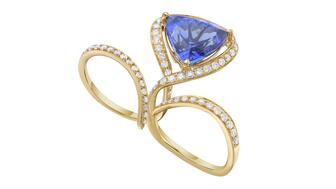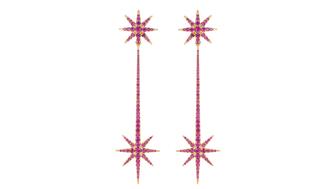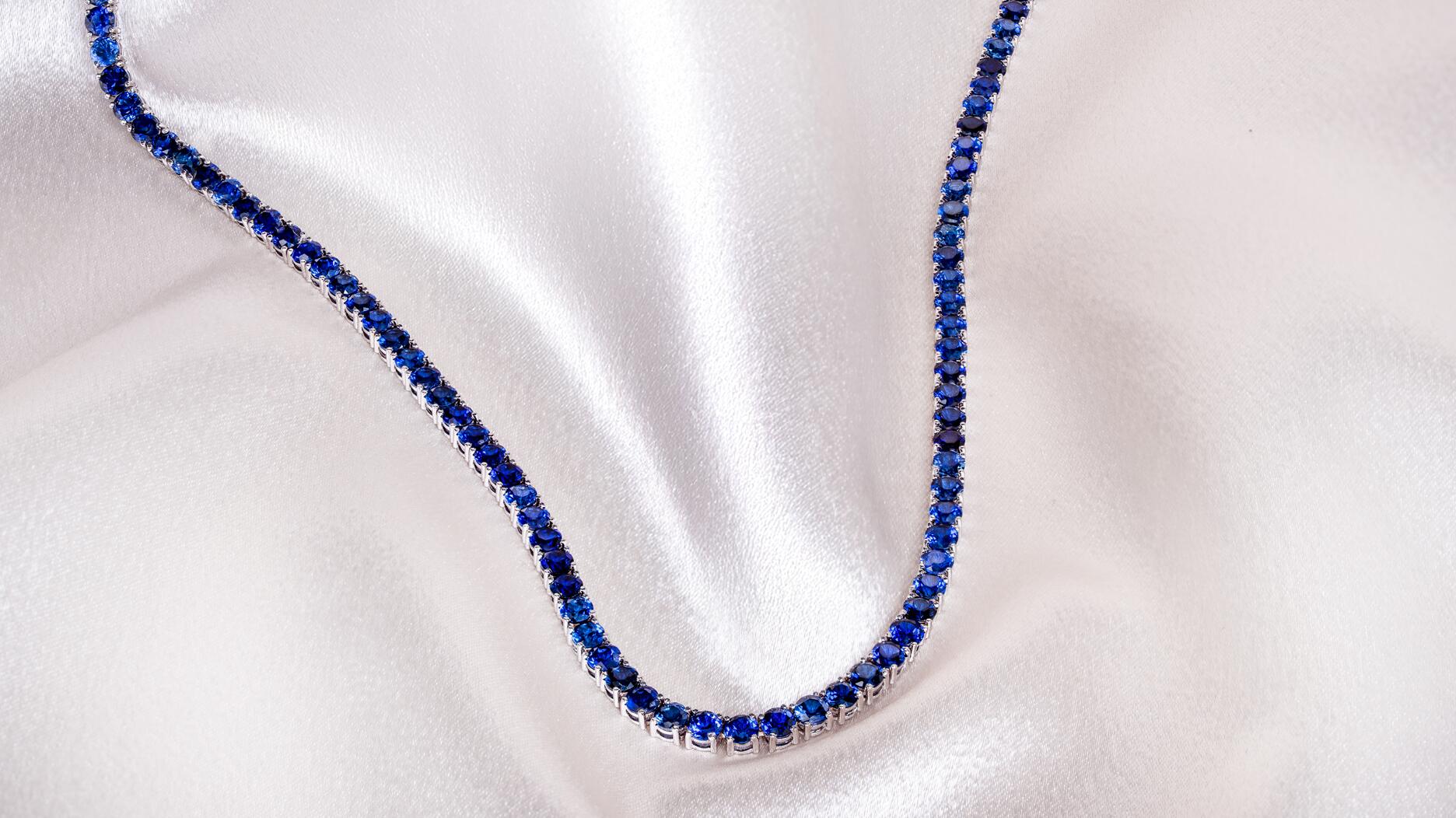Carlos Jose Hernandez and Joshua Zuazo were sentenced to life without the possibility of parole in the 2024 murder of Hussein “Sam” Murray.
What Does Transparency Mean in 2019?
It’s central to growing your business, and it’s not just about material provenance.
There are a handful of topics right now in the jewelry industry that come up again and again—sustainability, social media and omnichannel retail, to name a few—and rightly so, because they signal monumental changes in the way all sectors of the industry do business.
Transparency is one of these hot topics that I hear a great deal about, but I was surprised to get a totally different take on the issue at a recent educational panel at JCK Las Vegas.
Moderated by Ben Smithee of The Smithee Group, the panelists of “JCK Next Generation” illuminated how empowering transparency can be for a company when approached in a multi-faceted way.
“Some of us think if we don’t know provenance for every single element that we can’t participate in being transparent with our customers—that’s not at all true.”— Michelle Adorjan Chila, Tacori
“Don’t be intimidated by it,” said Michelle Adorjan Chila, senior vice president of marketing and public relations at Tacori.
“Some of us think if we don’t know provenance for every single element that we can’t participate in being transparent with our customers—that’s not at all true.”
For Tacori, Chila explained, which is handmade in California, the brand’s current mission is to illuminate what it already offers—“bespoke, made-to-measure jewelry”—to consumers.
“What we’re working toward is creating that artisanal transparency, so [customers] know which artisans worked on their pieces,” she said.
“In bridal, every customer feels like they got their own ring, though [in the industry] we know it’s a variation of a color, a finger size, a diamond shape or size, but it has to feel really personal. And that journey that it takes to get to you is personal. Each ring has its own unique path.”
Transparency can also be a valuable tool, she said, in communicating a brand’s story through social media.
“We’ve been doing Instagram Stories where we meet our designers and they talk about their favorite pieces and why. Doing that for your sales team is also really functional, where they get to share their favorite pieces and why, or give visibility into the before and after of a custom piece.
“Any [time] you give people insight into the magic adds value, and whether that’s provenance-related or materials-related or designer-related, that’s a really important story that we need more of.”
Chila’s point, that transparency into the inner workings of a business can pique
View this post on InstagramA post shared by WWAKE (@wwake) on Jun 15, 2019 at 12:30pm PDT
Brooklyn, New York-based Wwake, headed by designer Wing Yau, is a perfect example of the strategy Chila talks about.
A recent Instagram story I viewed took me behind-the-scenes of the Wwake workshop in Brooklyn’s Greenpoint neighborhood, where I watched a female bench jeweler set a ring with diamonds and gemstones. What many in the industry may take for granted as being the mundane, daily workings of their company can be fascinating to the average layperson, even to a seasoned jewelry lover like me.
I’m not the only one interested in the unique, esoteric craft of jewelry-making.
Instagram itself went on to visit the Wwake workshop as well, capturing a tour of the facility in its Instagram Stories (yes, Instagram’s Instagram Stories; I can only imagine how many consumers were introduced to Wwake in the process.)
Even if product isn’t fully made on-site or in the country, brands can still provide insight into their world.
Dana Rebecca Designs, based out of Chicago, does an excellent job of this.
A recent Instagram story showed the designer in her workshop in India, demonstrating the steps of the manufacturing process, while a typical story will show employees of the Chicago store showing off the jewelry they’re wearing that day, oftentimes touting a sale to go with it for certain pieces, and even tagging the clothing brands they’re wearing.
The social interaction feels personal and authentic, which is the key to transparency, said another “JCK Next Generation” panelist, Jackie Brooks, owner of Bottom Line Marketing.
“Be transparent with your employees. Are you up? Are you down?”— Jackie Brooks, Bottom Line Marketing
“You can’t cut corners anymore, it needs to be real,” she said of addressing consumers on social media.
But authenticity doesn’t stop there. Brooks stressed that transparency is important in all aspects of a company, not just on the consumer-facing front.
“Be transparent with your employees,” she said. “Are you up? Are you down? Are you meeting your sales goals? Why are there secrets in that world? Let employees take ownership.”
And how can retailers address transparency, particularly when it comes to the provenance of all the materials from all the brands they carry or the loose diamonds they sell, including older product made or mined before there was all this emphasis on transparency and traceability?
GIA Global Director of Business Development (and former National Jeweler publisher) Matthew Tratner said that as he’s traveled the country talking about GIA’s new diamond origin reports, that’s the No. 1 question he’s asked, and his advice is to just be honest.
“Unfortunately, the answer is really that the technology just didn’t exist to be able to match that rough to the polished diamond. It doesn’t mean [a diamond was] unethically sourced.
“As technology evolves and blockchain gets better and other [new] data systems come to the forefront, there’s always going to be that question.”
Tratner said to tell consumers: “There’s the technology to identify these diamonds now; when these other diamonds were obtained, the technology didn’t exist.”
The Latest

Yood will serve alongside Eduard Stefanescu, the sustainability manager for C.Hafner, a precious metals refiner in Germany.

The New Orleans jeweler is also hosting pop-up jewelry boutiques in New York City and Dallas.

How Jewelers of America’s 20 Under 40 are leading to ensure a brighter future for the jewelry industry.

Set in a Tiffany & Co. necklace, it sold for $4.2 million, the highest price and price per carat paid for a Paraíba tourmaline at auction.


The jeweler’s “Deep Freeze” display showcases its iconic jewelry designs frozen in a vintage icebox.

Take luxury gifting to new heights this holiday season with the jeweler’s showstopping 12-carat sphene ring.

Roseco’s 704-page catalog showcases new lab-grown diamonds, findings, tools & more—available in print or interactive digital editions.

This year's theme is “Unveiling the Depths of the Ocean.”

In its annual report, Pinterest noted an increase in searches for brooches, heirloom jewelry, and ‘80s luxury.

Starting Jan. 1, customers can request the service for opal, peridot, and demantoid garnet.

The 111-year-old retailer celebrated the opening of its new location in Salem, New Hampshire, which is its third store in the state.

The new catalog features its most popular chains as well as new styles.

The filmmaker’s personal F.P. Journe “FFC” prototype was the star of Phillips’ recent record-setting watch auction in New York.

The new location in the Design District pays homage to Miami’s Art Deco heritage and its connection to the ocean.

Inflations, tariffs, and politics—including the government shutdown—were among consumers’ top concerns last month.

“Longtime favorite” presenters, as well as first-time speakers, will lead talks and workshops at the annual event in Tucson next year.

Silas Smith of Meridian Metalworks won the challenge with his pendant that blends Australian and American landscapes.

The sale of the 31.68-carat, sunset-hued stone was part of Sotheby’s first series of events and auctions in Abu Dhabi.

Most customers who walk into your store this month have made up their minds. Your job is to validate their choice, Emmanuel Raheb writes.

The collection features characters and motifs from Ukrainian folklore, including an enchanted mirror and a magic egg.

MatrixGold 3.11, the newest version of the jewelry design program, offers more flexibility, precision, and creative control.

The pavilion will be part of the 2026 JA New York Spring show, scheduled for March 15 to 17.

Kadet, a 1994 National Jeweler Retailer Hall of Fame inductee, helped grow the family-owned retailer in the Chicago area and beyond.

Billed as the world’s smallest wearable, Lumia Health’s new smart earrings have a health tracker subtly embedded in the back.

Don’t let those with December birthdays feel blue. Help them celebrate their month with blue zircon, turquoise, and tanzanite.

The new pink sapphire version of the piece dances with its wearer in the brand’s “Icons After Dark” holiday campaign.



























